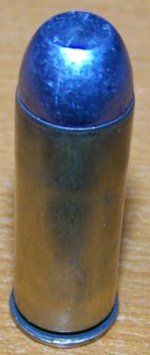Picked up my first revolver over the weekend. Wife said “why don’t you have one like that” in my collection. Without a good answer I said, “I don’t know, why, do you want one?” to my absolute surprise she said she would like to try one. So, I bought a RI M200 for $230 bucks. Price was good, has good reviews, seems to be built better than some of the other 38’s in the price range, why not. Took her to the range Sunday and now this is her gun. She likes the simplicity of the revolver. Bullets go in the cylinder, latch it closed, Bang X 6, then click, flip and use like hammer or reload. Push rod, rinse and repat. I am pleased she has something she feels good with around the house if I’m out. I know 38 special is a little weaker than 9mm but way better than something she might have a hard time getting into action.
So, to the meat of the question. I’ve never loaded 38 special or rimmed revolver cases. Any thing special I need to look at? Powders in stock at the bench are W231, W244, HS-6, tight group, H110. Bought some FN plated 125’s and have some small pistol primers left. Where should I start? Powder, primer, bullet?
As always thank you for your input
So, to the meat of the question. I’ve never loaded 38 special or rimmed revolver cases. Any thing special I need to look at? Powders in stock at the bench are W231, W244, HS-6, tight group, H110. Bought some FN plated 125’s and have some small pistol primers left. Where should I start? Powder, primer, bullet?
As always thank you for your input
Last edited:

